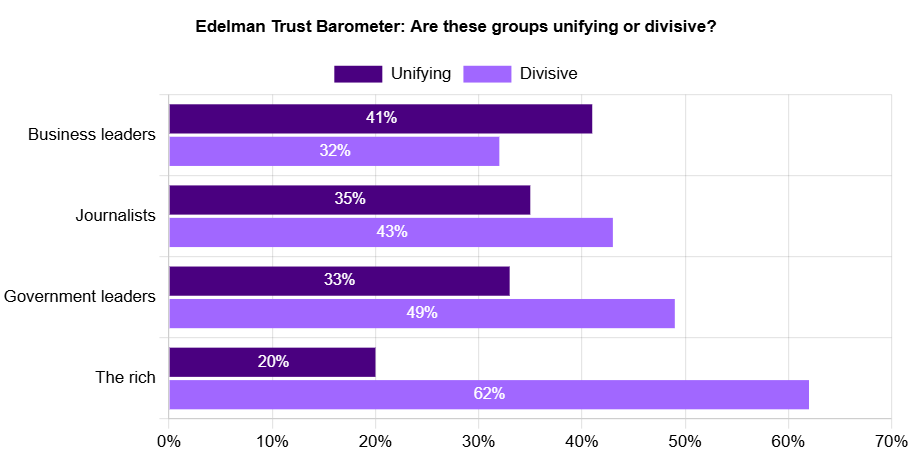Executive Summary
CEOs are imperfect. Find out why, when everyone accepts that, it can be a powerful catalyst for growth.
Contents:
- Why businesses should embrace the imperfect CEO
- Why do we expect CEOs to be super-human?
- What should boards expect from their CEO?
- Can anyone ever be ready for the CEO role?
- How to identify leaders with CEO potential
Why Businesses Should Embrace the Imperfect CEO
Imperfection isn’t failure. Yet when it comes to CEO succession, businesses today often expect candidates to be the full embodiment of excellence and success—to be perfect.
They expect CEOs to avoid any missteps as they set the direction and strategy of the company, lead and develop the executive team, build and maintain relationships, make decisions, communicate effectively, manage financial performance, and demonstrate integrity and ethical leadership.
And this lengthy list of expectations is only growing. New demands keep emerging, while old demands never drop off – from owning environmental, social, and governance (ESG) actions, to explaining approaches to data security.
As demands keep proliferating and perfection remains out of reach, would it be better for the individual and business if those in charge of CEO succession efforts embraced the “imperfect CEO”?
When CEOs can admit their flaws and mistakes, they create a sense of trust and authenticity with employees, investors, and other stakeholders.
Imperfect CEOs can also be more innovative than leaders who focus on maintaining a perfect image. When CEOs are comfortable acknowledging their imperfections, they’re more open to new ideas and ways of thinking.
And imperfect CEOs are more resilient and better equipped to handle challenges. By confronting their mistakes and learning from them, setbacks are less likely to derail them and they’re more likely to bounce back from adversity.
So, rather than striving for perfection, we must embrace CEOs’ flaws and use them as an opportunity for growth and development. By doing so, the organisation will be more authentic, innovative, and able to manage challenges—all essential elements of long-term success.
14%
of organisations are confident in their succession plans
Why Do We Expect CEOs to be Super-Human?
Expectations of CEOs, such as the need to be ethical, competent, and able to make tough decisions, are nothing new—and historically weren’t a problem.
But two trends over the last 30 years have turned these admirable expectations into a desire for perfection that stands in the way of brilliance:
- The rise of CEOs as public figures
- The growing list of corporate responsibilities
Historically, boards expected their CEO to manage the company’s resources and ensure the business ran smoothly, rather than be a visionary leader and the public face of the organisation.
But since the 1990s, the role of the CEO has become more public-facing. Many of the most successful businesses of the last 30 years depend on bosses with big personalities and big visions, such as Bill Gates, Jeff Bezos, and Elon Musk. These celebrity CEOs create a public image of success that permeates other organisations.
At the same time, the role of corporations in society has changed, putting new demands on CEOs. Today’s CEO must be a strong communicator who can inspire and motivate employees, rather than simply manage resources. And they need to have a vision of how their company will address social and environmental issues and be transparent about its impact.
Most surprisingly, business leaders are now the most trusted group in society. Edelman’s 2023 Trust Barometer showed that, while people see government officials, journalists, and the rich as divisive forces, they’re more likely to see CEOs as a positive force in society. That’s a tough expectation to live up to.

What Should Boards Expect from their CEO?
As no CEO can perfectly deliver on every expectation put on them alone, they must be talented team leaders. They need to be able to build the right C-suite around them to support their ambitions and compensate for their weaknesses. They also need to inspire that team to deliver outstanding results and empower each CxO to take a leading role by delegating relevant responsibilities. Only through a team effort can a CEO ensure the organisation lives up to the ever-growing list of expectations.
But there are areas where the CEO must be world-class. Having supported thousands of companies select their CEO over the last half century, we see six tasks and three traits where CEOs need to excel:
Six tasks the CEO can’t delegate
- Maintain relationships with the most senior stakeholders
It will always be the CEO’s responsibility to interact with the board and investors. They’re the one who needs to maintain good working relationships to enable organisational success. - Set the organisational culture and always embody it
Corporate culture starts at the top. While the entire senior leadership team is responsible for living the culture, the CEO is the most important role model and should lead its articulation. - Make decisions on the organisation’s strategy
The CEO must have the final say on the organisation’s strategy. It’s their job to work with the board and C-level executives to create a strategy the firm can deliver. - Create a process that leads to a deliverable vision
Unlike the strategy, which begins and ends with the CEO, the company vision should grow more organically from the leadership team. Nevertheless, the CEO must take responsibility for creating the process that will allow the team to develop the vision. - Oversee the balance sheet and capital allocation
While the CFO is responsible for company finances, the CEO needs to oversee them. After all, the CEO is the one who’s ultimately responsible for the organisation’s bottom line. - Select and develop the senior team
The CEO needs support from their C-suite. That means they need to take responsibility for choosing and developing their top team, ensuring they’ve got the right people around them.
Three traits the CEO must have
- A beginner’s mindset and learning agility
Taking on a CEO position will always bring a steep learning curve. The CEO should go into the role thinking like a beginner, rather than bringing preconceptions with them. And they need to show the ability to learn in real-time. - The humility to accept they can’t do it alone
The complexities of the role mean CEOs will make mistakes and need to ask for help. So, they need to be humble and able to build followership. Only by recognising they need the support of others will they succeed. - An ability to draw ideas out of teams
The best leaders ask the right questions, of the right people, in the right way, to draw out their ideas. This is especially important for CEOs, who must understand that they’re unlike to get candid feedback from more junior colleagues.
Can Anyone Ever Be Fully Ready for the CEO Role?
Today’s CEOs are accountable for more and control less than ever before. For example, they must deliver outstanding business results in the face of unprecedented external forces, and they must show progress toward sustainability despite often inheriting unsustainable business processes. This creates enormous pressure when starting a new CEO role.
On top of this, the CEO role is a lonely one. Professional relationships can feel more hierarchical and less collegiate. Teams distort the information they share—both consciously and unconsciously. Others watch and act on everything the CEO says and does—even when they’re just thinking aloud. And CEOs sacrifice most of their lives for the business, putting in long hours.
These unique challenges raise one important question: How can you identify leaders with the potential to succeed as a CEO?
How to Identify Leaders with CEO Potential
It’s important to focus on the essential skills, knowledge, and experience that successful imperfect CEOs need.
Boards should temper their expectations and look for important indicators of CEO potential. They should determine whether candidates will be able to handle the tasks and have the traits to excel as CEO by assessing their:
- Intellect, problem-solving, and systems thinking
- Intellectual humility and self-awareness
- Ability to work well with ambiguity and conflict
- Ability to learn continuously
- Drive to excel at an extremely high level
- Emotional intelligence and ability to influence others
- Leadership style versatility
This is, of course, a complex picture to paint of prospective CEOs. So, assessments will need to be multi-faceted and include interviews with multiple experts, psychometric profiling, and 360-degree feedback.
Assess leaders’ CEO potential
To be most effective, it’s best to assess candidates early—four or five years before changing CEOs—so you have enough time to thoughtfully develop those internal candidates. It also leaves enough time to recruit, integrate, and develop talent if you find you need to bring in new leaders with higher potential or distinct characteristics.
Getting such a critical process right is tough. You need to assess how a potential CEO balances a complex mix of characteristics:
- Being both disruptive and pragmatic: Pragmatic disruptors innovate in collaboration with their teams. They recognise achieving bold visions requires the engagement of the broader organisation.
- Being both risk-taking and reluctant: Reluctant risk-takers are willing to make big bets, but they do so cautiously. They resist trend-chasing, cut through the clutter of competing ideas, and take risks where they matter.
- Being both heroic and vulnerable: Vulnerable heroes lead the charge while understanding they don’t have all the answers. They make bold decisions, engage teams in decisive action, and seek guidance.
- Being both galvanising and connecting: Galvanising connectors build tight-knit teams while engaging a wider ecosystem of internal and external partners. They’re highly inclusive, and build bonds within, and build bridges to, the team.
To assess this critical balance, we’ve developed Leadership Span™. Using a unique, science-based approach to personality assessment, we help you predict a leader’s performance.
Assess candidates’ CEO readiness
When it comes time for a candidate to step into the CEO role, it’s important to look beyond their potential and focus on their readiness—do they now have the skills, experiences, and traits needed to tackle the company’s priorities and deliver the strategy?
While some scientific methods, such as psychometric assessments, can predict this, direct observation shows whether candidates are ready. So, we’ve created a process for running contextual immersions—unique exercises that put a CEO candidate in realistic scenarios played out by other executives. By asking the candidate to step into the role of CEO in a controlled environment, we can see how they would perform in the real world.
Featured Case Study: Keeping Steady Through Upheaval
Faced with a tricky merger and an industry-stalling pandemic, a world-leading consumer business partnered with us to set up a CEO succession plan that would find a leader capable of keeping the business strong today and into the future.
The leadership challenges
The organisation had just acquired another company and was in the middle of the complicated process of merging and integrating it. And to make things worse, the CEO was experiencing health challenges.
Succession suddenly became a critical issue for the board.
The fact that the founding family had run the business for decades added to the pressure—should the next CEO be a family member or not?
In the end, the board knew they needed expert help to identify the route that would be best for the company and the family in the longer term.
The CEO succession process
The board enlisted us to support their CEO succession process.
Together, we started by benchmarking the internal candidates against external executives. We compared all prospective candidates to a future-focused CEO success profile that we crafted through workshops with the board and other key stakeholders. This profile looked at the non-negotiables of being a CEO and weighted them by what was most important to the business. It was also explicit that other skills, experiences, and traits were nice to haves.
We worked with the business to interview each candidate before bringing in behavioral and industry experts to run psychometric profiling. We also gathered 360° feedback.
We weren’t looking for a perfect CEO. Instead, we were looking for candidates with outstanding strategic thinking skills and the ability to make tough decisions. Later, we further shortened the candidate list by their ability to have candid discussions with members of the board and family, and their performance to date.
This iterative method was especially important as, during the process, the onset of the pandemic plunged the company into net-negative earnings.
The outcome
When the board needed to find a new CEO unexpectedly, they were ready. They knew each candidate’s strengths and weaknesses so could quickly assess who was ready to step into the CEO role.
To date, the new CEO has flourished. They’ve helped rebuild the company’s financial performance, and we continue to support them through leadership team effectiveness programs that develop the new executive team.
The article was first published by Russell Reynolds Associates.
Photo by RDNE Stock project by pexels.com.

 5.0
5.0 













